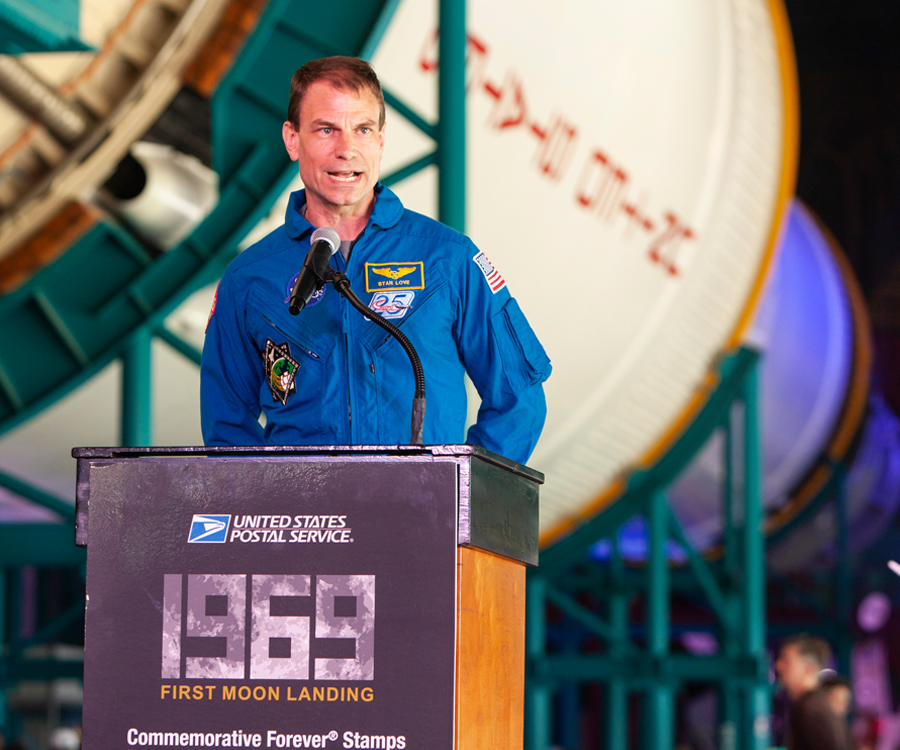The Postal Service honored the 50th anniversary of the first moon landing by dedicating two stamps last week.
During the July 19 ceremony at the John F. Kennedy Space Center on Merritt Island, FL, the three astronauts from the moon-landing Apollo 11 mission — Neil Armstrong, Buzz Aldrin and Michael Collins — were praised as modern-day heroes.
“With the dedication of these stamps today, we pay tribute to all those individuals with the right stuff — the astronauts, engineers, mathematicians, physicists, computer specialists, contractors and all the hidden figures, men and women, who worked behind the scenes to land Americans on the moon and to bring them safely home,” said Tom Marshall, the Postal Service’s general counsel, who led the ceremony.
NASA’s Apollo 11 mission was launched from the Kennedy Space Center on July 16, 1969. Armstrong served as the flight commander, Aldrin was the pilot of the lunar module Eagle and Collins was the pilot of the command module Columbia.
On July 20, after the Eagle had separated from Columbia and touched down in the Sea of Tranquility, Armstrong stepped onto the moon’s surface and famously said, “That’s one small step for a man, one giant leap for mankind.”
The three astronauts returned to Earth on July 24.
The 1969: First Moon Landing stamps, available at Post Office and usps.com, honor the historic milestone.
One stamp features Armstrong’s iconic photograph of Aldrin in his spacesuit on the surface of the moon. The second stamp is a photograph of the moon that shows the landing site of the lunar module.
Other participants in the ceremony were Steve Monteith, the Postal Service’s marketing vice president; Kelvin Manning, the Kennedy Space Center’s associate director; Therrin Protze, the Kennedy Space Center visitor complex’s chief operating officer; Russell “Rusty” Schweickart, a retired NASA astronaut and scientist; and Stanley Love, an astronaut.
In his remarks, Manning discussed NASA’s plan to return American astronauts to the moon by 2024.
“This time, when we go to the moon, we will stay,” he said. “And then we will use what we learn at the moon to take the next giant leap — sending astronauts to Mars, achieving the impossible once again.”






